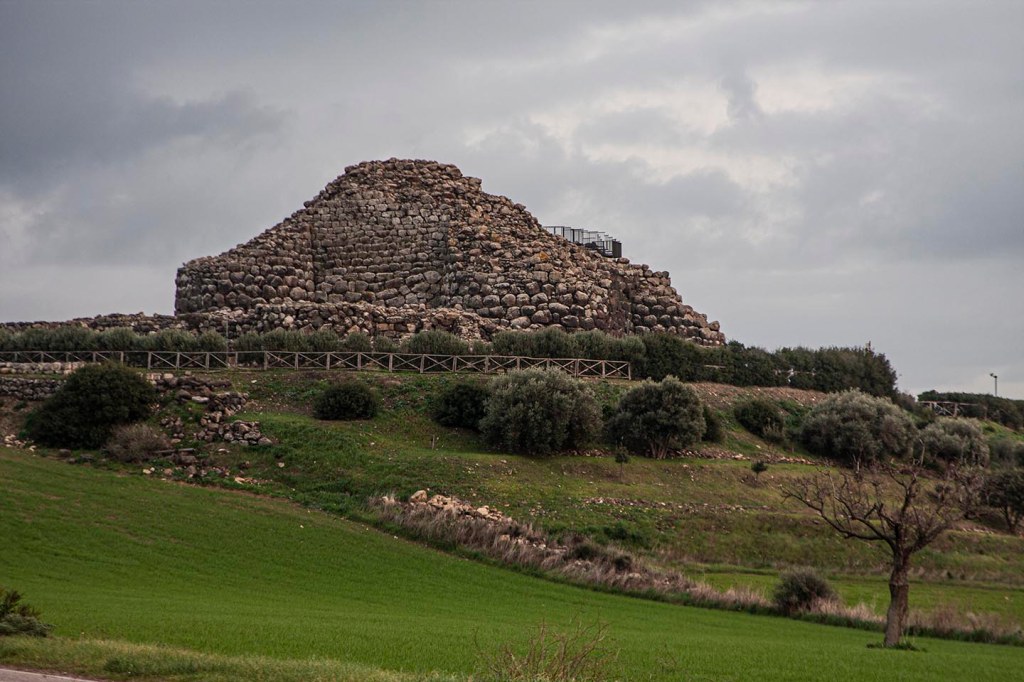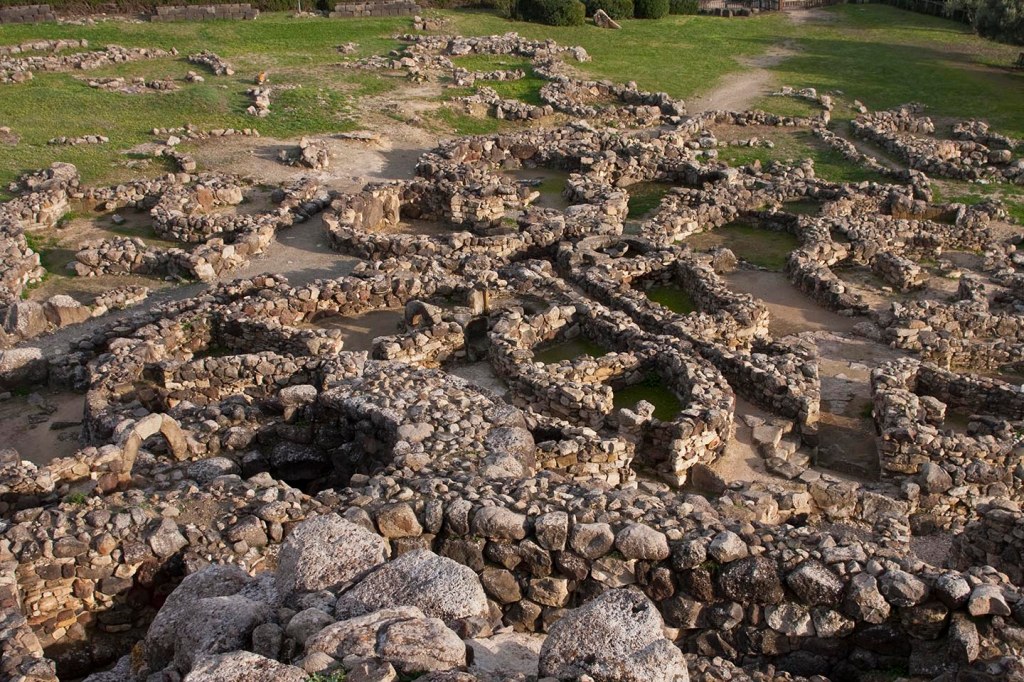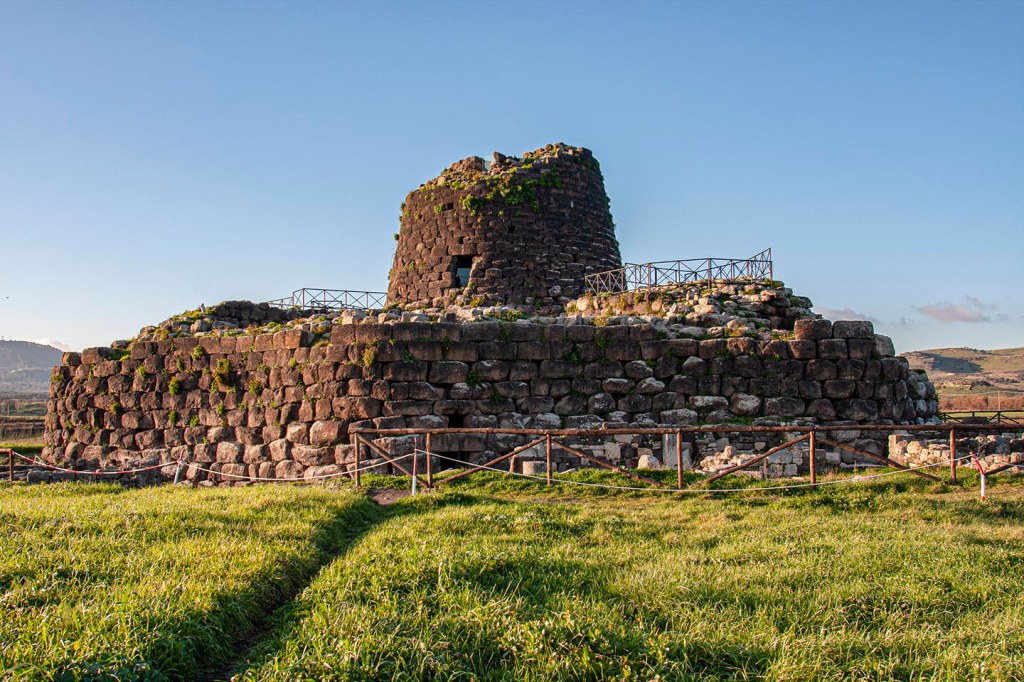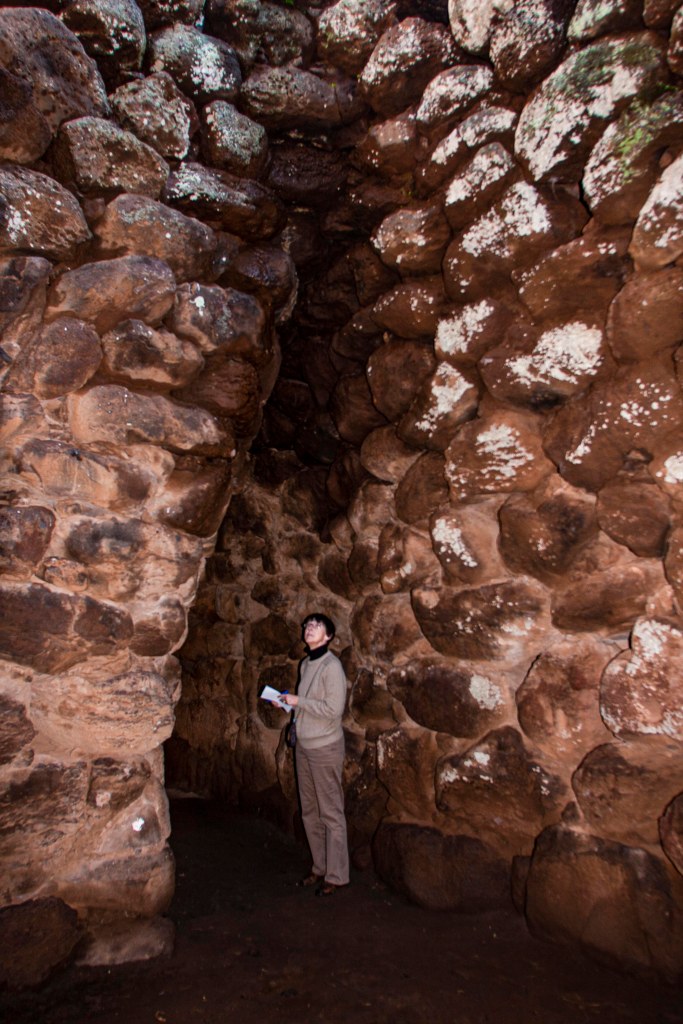Prehistoric Rock Towers Rise Above the Ruins of Ancient Houses Below

Five thousand years ago, at the dawn of the Bronze Age, a people on Sardinia (Sardegna) built stone towers for defense, whose remains yield all we know of the people. They possessed no written language and the remains and artifacts found at their settlements yield all that we know of them.

The word Nuraghe (pronounced Nur-ah-gay) is a description of many things. The first meaning is a megalithic tower, a structure made of large coarsely worked stone, most probably built as a refuge in times of danger. They began to rise from the landscape around 3,000 BCE and, at last count, there are more than 7,000 of them scattered around the island of Sardinia.
Another meaning described by the word Nuraghe is the people who built these. They had no written or pictographic language and who they were and what they called themselves is unknown. Today they are known only as Nuraghic peoples, the builders of the Nuraghe. To put this civilization into perspective, and to bring these people back to life in our imaginations, it is interesting to note that these towers were being built at about the same time that Otzi — Frozen Fritz (found frozen in the Alps in 1991) — set off from his village into the Alps. Art that time trade was just beginning in the western Mediterranean.

In Nuraghic settlements clusters of circular megalithic huts usually lay at the base of three story stone towers. Thos settlments were populated at times by only a few people and at other places by 100 or more. In these houses large circular dry stone walls were laid forming a room, often with several placed together around a central open area or courtyard. Above these walls, branches, leaves and perhaps reed thatch formed a roof. Excavations of these huts around Nuraghe have yielded artifacts such as pottery, jewelry and food remains, indicating periods of occupation over millennia from before 3,000 BCE into the Roman Republic and even the Roman Imperial periods CE.

The Nuraghe towers themselves are the most fascinating part of this culture to survive. They began as single towers, perhaps 20 meters (60 feet) in circumference, built of huge stones roughly shaped on the exterior and laid stone upon stone. As the walls rose, a round inner chamber was created inside the center, each layer of its stones reaching a little further to the center, creating an enclosed conical room at the top, called a thalos dome. Between the outer wall of this chamber and the outer wall of the tower a spiral stone stairway led to the upper level. This process was repeated until the towers reach a height of three levels. Visitors today walk into those original chambers and climb those original stairs created 5000 years ago.

At the top of these towers corbels (large worked stones that extend beyond the wall) supported a stone terrace and wooden walls at the top of a tower. While none of the surviving Nuraghe have the upper level, several stone sculpture of the towers have been found during excavations, confirming evidence found on the ground. At the small Nuraghe Albucchiu in Arzachena stubby remnants of the corbels remain in place while at Nuraghe Su Nuraxi in Barumini the corbels survive but are lined up on the ground. Some Nuraghe were later expanded to add other towers connected by curtain walls and creating inner courtyards. In short, in these Sardinian towers it is possible to imagine the birth of the European castle.

For anyone interested in primitive cultures and the early development of European civilization, Sardinia is like a candy store of knowledge and connection. The sheer volume of sites, from Nuragic towers to long tombs — Tomba dei Giganti, such as those at Coddu Vecchiu — staggers the imagination. Religious sites such as the amazing sacred well at S. Caterina tie these peoples into religious practices of later millennia. Sardinia is a place to discover the story of mankind first hand.